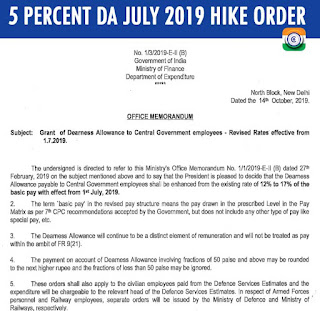Defined Contribution Pension Scheme (National Pension System)
(Salient Features)
- The National Pension System works on defined contribution basis and will have two tiers - Tier-I and II. Contribution to Tier-I is mandatory for all Government servants joining Government service on or after 1-1-2004 (except the armed forces in the first stage), whereas Tier-II will be optional and at the discretion of Government servants.
- In Tier-I, a Government servant will have to make a contribution of 10% of his basic pay plus DA, which will be deducted from his salary bill every month by the PAO concerned. The Government will make an equal matching contribution. However, there will be no contribution from the Government in respect of individuals who are not Government employees.
- Tier-I contributions (and the investment returns) will be kept in a limited partial withdrawable Pension Tier-I Account. Tier-II contributions will be kept in a separate account that will be withdrawable at the option of the Government servant. Government will not make any contribution to Tier-II account.
- The existing provisions of Defined Benefit Pension and GPF would not be available to the new recruits in the central Government service, i.e. to the Government servants joining Government service on or after 1-1-2004. However, retirement gratuity and death gratuity would be extended to the central government employees covered under NPS on the same terms and conditions as applicable under CCS(Pension) Rules, 1972.
- In order to implement the Scheme, there will be a Central Record Keeping Agency (CRA) and several Pension Fund Managers (PFM) to offer three categories of Schemes to Government servants, viz., options A,B and C based on the ratio of investment in fixed income instruments and equities. The participating entities (PFMs and CRA) would give out easily understable information about past performance, so that the individual would be able to make informed choices about which scheme to choose.
- An independent Pension Fund Regulatory and Development Authority (PFRDA) will regulate and develop the NPS.
- A Government servant can exit at or after the age of 60 years from the Tier-I of the Scheme. At exit, it would be mandatory for him to invest 40 per cent of pension wealth to purchase an annuity (from an IRDA-regulated Life Insurance Company) which will provide for annuity for the lifetime of the employee and his dependent parents/spouse. He would receive a lump-sum of the remaining pension wealth which he would be free to utilize in any manner. In the case of Government servants who leave the Scheme before attaining the age of 60, the mandatory annuitization would be 80% of the pension wealth.
- Provisionally, central government employees covered under NPS has option to choose benefits under old pension scheme or NPS in the event of their death or discharge from service on invalidation.
Frequently Asked Questions (FAQs)
(National Pension System)
(National Pension System)
Last updated/Reviewed: 18.12.2017
In accordance with DoP&PW O.M. No. 38/41/06 - P&PW(A) dated 5.5.2009 such employees who joined after 31/12/2003 and/or their families may be given the benefit of disability pension or family pension provisionally till the finalization of rules under the National Pension System (NPS) on death/injury.
Further, the benefit of Retirement Gratuity and Death Gratuity have been extended to the Central Government civil employees covered under NPS in the same terms and conditions as applicable under CCS Pension Rules, 1972 vide this OM no. 7/5/2012 - P&PW(F)/B dated 26/08/2017.
NPS.2 What are the guidelines/orders in regard to settlement of dues of the deceased Government employees covered under NPS?
As per the Department of Pension & PW O.M. No.38/41/06 - P&PW(A) dated 5.5.2009 (available on website) the benefits under the CCS(Pension) Rules has been provisionally extended to the families of deceased employees covered under NPS. Family Pension/gratuity in terms of O.M. dated 5.5.2009 shall be payable to the family of the deceased employee if the deceased employee was covered under NPS and fulfils the conditions. These payments are provisional and will be adjusted as per the final provisions. As per Para 7 of the O.M., the accumulations in pension wealth of deceased employee under NPS will not be paid during the period provisional benefits under the aforementioned O.M. are payable. The Head of Office will prepare the pension papers as per provisions of the relevant rules and proceed as per the procedure for making the provisional payments to eligible Government servants families explained in Ministry of Finance O.M. No.1(7)/DCPS(NPS)/2009/TA/221 dated 2.7.2009 read with corrigendum dated 29.9.2009.
Source: pensionersportal.gov.in








0 comments:
Post a Comment